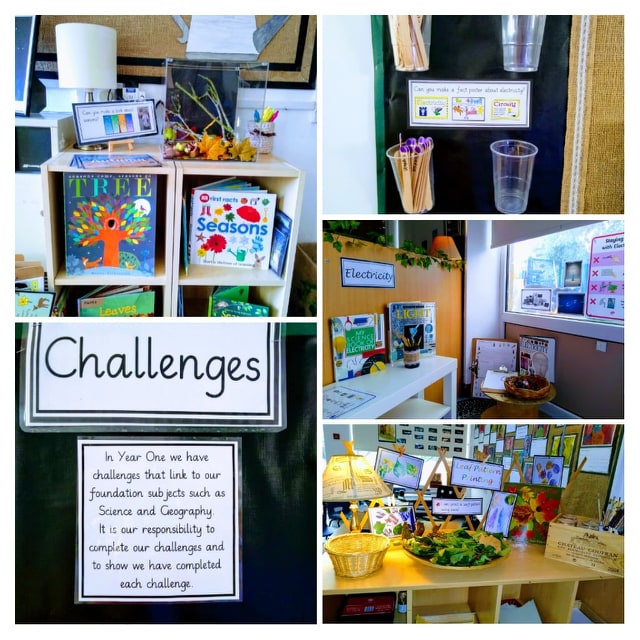“If they can't say it, they can`t write it’’ –
Talk for Writing in Year 1.
We
have just finished our first Talk for Writing project this year. The results?
When
we looked at the final independent piece of writing the children created just
before half term, it was clear that every single child made progress and that
Talk for Writing is the right approach when teaching literacy in our
setting.
What is Talk for Writing?
Talk
for Writing is an engaging teaching framework developed by Pie Corbett, supported
by Julia Strong. It is powerful! Based on the principles of how
children learn, it enables them to imitate and learn the language they need for a
particular topic, before reading and analysing it and then writing their
own version. It’s basically about learning the model text almost by heart. The
aim is for children to learn vocabulary and sentence structures they can later
use in their writing.
Patience is key.
You
can’t rush with Talk for Writing. Before we started using this approach for
teaching literacy, we used to plan our topics around the character or book.
Autumn term was usually about Percy the Park Keeper. We did fascinating and
inspiring things last year; wrote Percy’s description, described Percy’s shed,
went on a treasure hunt and again described chocolate coins. We wrote
instructions about how to make jam sandwiches and hot chocolate. At the end of
the teaching Percy’s topic, the children wrote a recount of the treasure hunt
story. All this in just 8 weeks! In between, we introduced conjunctions,
adjectives and question marks!
It
was too much, too rushed, too stressful and also confusing for the children,
who had just started their adventure as writers.
Decide what is your main teaching focus.
This
September we still learnt about Percy, but instead of doing too much we decided
to focus on the one aspect – a description.
Description
of Percy.
We
planned a sequence of lessons and created a toolkit for a description which
children could successfully use while writing independently in the provision or
during guided writing sessions.
We
started by assessing children in the first week. They were asked to complete
the Cold task. The children wrote a description of the chosen animal (picture).
This exercise was utterly independent, although we delivered a brief literacy
input focused on description just before the cold task assessment.
What have we learnt from the Cold task?
We
have learnt that children have almost no confidence when it comes to writing
and that they heavily rely on adult support. We have discovered that the
majority of our children can’t form a sentence and their spelling was quite
poor.
All
these observations, which followed after the Cold task assessment helped us to
plan a sequence of lessons in which children could learn, practise and build on
previous knowledge. We kept adding week by week, session by session. We had
lessons about nouns, adjectives, conjunctions and sentence starters. We made a
vocabulary mat.
The story path created by us and actions, helped us to learn a
model text.
We
had tried elements of Talk for Writing in the previous year with great success!
It was obvious that this year there will be no other way to teach literacy and
writing without Talk for Writing.
The Hot task children
completed (entirely independently)
just before half term and the quality of work, once again shows that this is
the right approach as the children made accelerated progress in only 6 weeks!
It’s
not always about being able to write well-composed sentences with the correct
punctuation. For some children, progress was about building the stamina needed for
writing or downsizing the letters and working on their formation. The progress
was also about being a happy, confident and independent writer.
We
had a reasonably able boy in our setting who couldn’t write a single sentence
without being reassured about every single sound and word. This boy, by the end
of our writing project, wrote – completely independent – a Percy description in
which he included all the features he learnt; exciting adjective, conjunctions
and his punctuation was almost spot on.
Another
example is a girl who didn’t like writing. During the Hot task I couldn’t stop
her writing! She decided that she will need to write a whole page. Even though
her writing still needs lots of work and practise, the progress she made is
incredible – she was persevering and it was a pleasure to see her as a
confident and happy writer.
And
it’s not only these two children who caught the writing bug. Every day in our
setting is about writing, the independent and
child-initiated writing. Children
produce a few pieces of writing every day, which the teachers edit with them.
I
observed that some children, who initially struggled with the idea of
independent writing keep coming back and revisiting the tasks which they found
challenging at the beginning of the year. They try out themselves once again
while describing a pumpkin or the Autumn weather.
We are looking forward to the next project – a
set of instructions
about how to make jam sandwiches.
The
children have already completed their Cold task and the “story” path is ready.
We will use it, with the actions to help us learn the text and to construct a
tool kit for the instructions.
We
will let you know how it went.










































